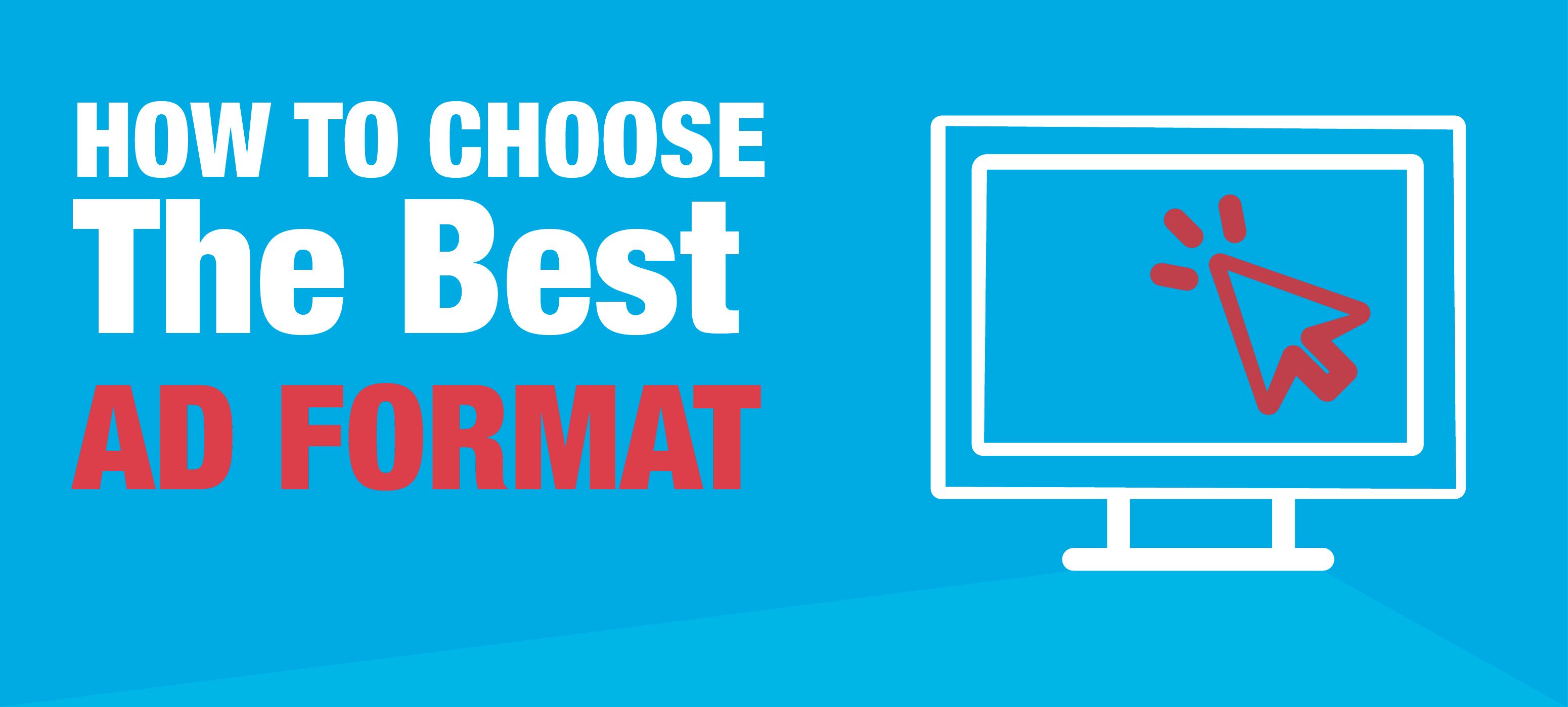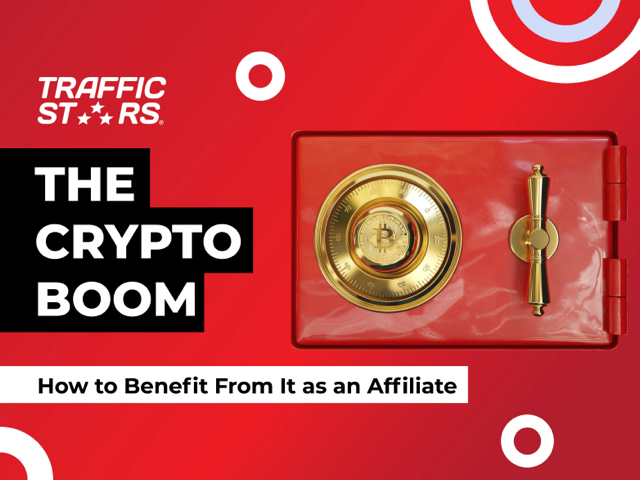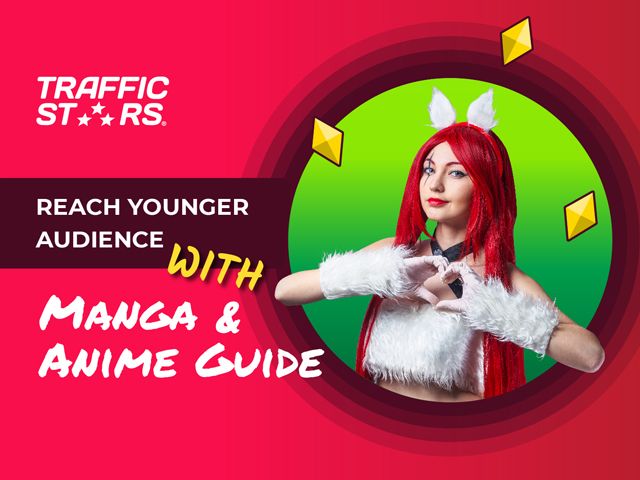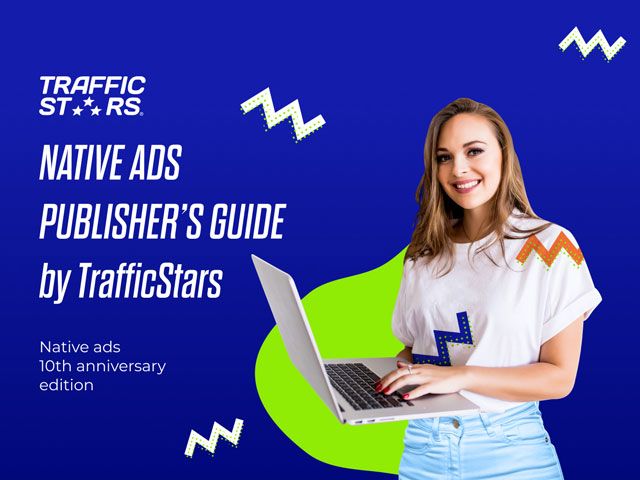
Advertising comes in different shapes, sizes, volumes and styles – and with more placements and formats being created every day, it can be hard to keep track of all the options available. To help you choose the best ad format for your business needs, we interviewed account manager Diana Krukovska and spoke with her about all the different ad formats available at TrafficStars; their pros and cons; and what formats you should use for the different verticals out there.
What are the banner formats available via the TrafficStars marketplace? Can you tell us a bit about each of them?
Diana: We have wide range of different formats at TrafficStars such as Banners in various sizes, Popunders, Native Ads and also Video pre-roll ads.
Banners
Banner ads are usually composed of an image (which can be animated or not) and some sort of text or call to action that invites the user to find out more about the promoted the products or services. This is the type of ad which varies the most, as banners can have multiple formats and placements across a website. At TrafficStars we work with the following formats: 300×100, 300×250, 250×150, 315×300, 728×90 and 900×250. These banners will be referred to by different names, which will depend on their placement on the website. Here are a few examples:
Footer: a banner ad placed on the end section of the web page, typically has lower visibility and therefore prices might be comparatively lower than other placements.
Header: a banner ad placed on the upper section of the webpage. Because of its position, it’s immediately visible when the user enters the webpage. In Video (or In Player) – a banner ad which appears over the video window if the user pauses playback.
Instant Message: a small banner ad that pops up on the corner of the screen, resembling an instant message notification.
Leaderboard: Typically it is a 728×90 banner placed at the top of a webpage, to be seen immediately when the page loads.
Middle: As the name implies, it’s a banner placed on the middle of the page content, mostly used on mobile websites.
NTV: NTV stands for Next To Video and as indicated by the name, it’s a banner ad placed next to the video on tube websites. In some websites, you can have more than one NTV placement, so they will be indicated by letters: NTV A, NTV B, NTV C and so on.
Interstitial Ads
This is a full screen ad (a 900×600 banner on desktop or a 300×250 banner on mobile), which is served between two pages of content, so will appear after the click on a link and before the desired page loads.
Popunder Ads
A popunder ad is a full landing page which loads behind the user’s current navigation tab. Because it loads behind the content the user consumes it does not interfere with the user experience and typically gets seen when the user is ready to focus on something else. This is why it is a very effective way of converting users.
Native Ads
Native Ads are ads that resemble the form, style and voice of the platform they appear on. Therefore, they are less disruptive to users while delivering a higher performance for advertisers. This format usually contains one clear image without any text or additional elements on it, along with a headline and brand name. To achieve better results, Native Ads should be transparent and use brand names, images and headlines that reflect the content the user will find on the landing page.
Video Pre-Roll Ads
It is a high quality video ad of up to 30 seconds, which plays before the actual video content the user has chosen to watch. The user is able to skip the ad after 6 seconds
What are the pros and cons of each?
Diana: Of course there are a few pros and cons you should take into consideration for each ad format, so let’s take a look at a few of them:
Pros Cons
Banners are the easiest and cheapest way to attract client attention, as there is a big variety of banner types and placements to choose from, with high volumes available in most GEOs. It can be a good way to pre-qualify the user you want to bring to your landing page. Especially when buying on CPC pricing model it makes sense to give the user a hint on what he will find after clicking on the ad. It is the most popular ad format on the market and there is a huge competition, especially for more premium placements such as NTVs.
Popunders have a simple flow, as the user is taken directly to the advertiser’s landing page. Because it loads in a hidden tab (under the user’s current navigation window), it’s less disruptive to the user experience. It’s a more expensive format and because users are shown the ad without choosing to interact with it (as opposed to when they click on a banner ad), it can be easily dismissed.
Native Ads It’s the least intrusive ad format out there, since it blends into the website’s content. It also tends to have higher click-through and engagement rates than regular banner ads and it’s completely compliant with Google’s Better Ad Standards. Works best with content landing pages, so it takes some extra work to create these landers. Video Pre-Roll Ads
Video Pre-Roll ads are a highly user-friendly and visually engaging format, so you can expect good conversion rates. Users are meanwhile open to receive video ads since they are used to get them on many mainstream channels such as Youtube or their social media platforms. On top of that, it’s completely compliant with Google’s Better Ad Standards. The biggest downside is that video ads can be more expensive and time consuming to produce if compared to other formats.
What ad format works best for each of our main verticals?
Diana: To answer this question, let’s look into the most common verticals promoted on our traffic: dating, cam offers, enhancement products, 3G subscriptions, gambling, gaming, forex and binary options, sweepstakes and VR (virtual reality).
Dating – Because of the nature of the websites we work with, this vertical can work very well in all formats, but the best performing are definitely the Native Ads format, banners (specially the Instant Message placement, which is basically taylor made for this sort of offer) and video pre-rolls ads as well.
Cam offers – the best converting formats are Popunders and Video Pre-Rolls, because you are able to “showcase” the product directly in the landing page in the case of a Popunder, and to take advantage of the webcam content to produce your video ads.
Enhancement products (Nutra) – Traditionally these offers perform well on banners and Native Ads, but we seen amazing results on Video Pre-Rolls as well.
iGaming – Can be promoted on banners and Popunders. Popunders are commonly used for this vertical to distantiate the advertiser from the website where the ad is placed into.
Adult Games – Again, we have been seeing great results with Video Pre-Rolls. Depending on the type of games, it can also be promoted with engaging pre-landing pages through banners, Native Ads and eventually Popunders.
Forex and Binary Options – Because these offers aren’t related to website content, they can work best with Popunder Ads but we have seen first campaigns on our Native placements already.
Sweepstakes – Most commonly these offers perform best on Popunders, but can also be easily paired with engaging banner ads or the right native approach.
VR – The VR vertical is fairly new and because of the novelty it can perform on any format: Banners, Native Ads, Popunders or Video depending on the offer. But, because of the possibilities of showcasing the product and its “immersive experience”, this vertical should be paired with Popunders and Video Pre-Roll Ads especially!
What tips or advice do you have for advertisers wanting to start on each of those ad formats?
Diana: For banners, the first thing is to think about the type of placement you’re interested in and create your banner with this placement in mind. Also, have a think about your offer – if you should focus on mobile or desktop devices, as this also impacts the type of banner you should choose. Then, the two essential parts of the banner are the image you choose and the call to action. Make sure you make your banner engaging with an attractive image and straightforward call to action.
Popunders might be the easiest ad format to start with, as you have less variants to test. All you have to do is create a landing page that fits with the offer – or tweak a landing page offered by the affiliate network or product owner. In this case, it’s very important to choose verticals that are known to perform well on this type of traffic, and choose the offers carefully. Finally, make sure you test different types of landing pages, to see which drive the most conversions.
For advertisers getting started with Native Ads, first of all I recommend that you take a look at our guide – it contains some very good tips regarding choosing the correct images to promoting your offers and best practices to write engaging headlines. Also, it’s very important to give this ad format some time for testing, as for different GEOs the same creative can show completely different results. And it goes without saying that you should adapt headlines and landing pages for the local language for each GEO you test.
💫 Check out our Native Ads Guide For Advertisers
Last but not least, when creating video pre-roll ads the most important thing to remember is that the user can skip the ad after 6 seconds, so you have to catch the user’s attention and engage them within this first 6 seconds. Check how video ads are implemented on the websites you are targeting. It’s important to know whether the whole video ad is clickable or only one specific URL – then you should adapt your Call To Action buttons accordingly, and make them visible for as long as possible. Also, remember that you can add your Call To Action to the audio as well, telling the user to click the link displayed in the video.
What advice do you have for advertisers who want to test a new ad format?
Diana: Don’t be afraid! Always try to test new ad formats (and ad spots!) as soon as they are added to our platform, as CPMs are always lower are the very beginning, before the format gets popular. In this moment, you have a great chance of getting the most traffic for considerably low CPMs. And to be the first to know about new ad spots and formats, you should definitely sign up for our weekly newsletter.
Also, remember that there’s always a learning curve when starting with a new format – so you will have to invest some money in testing and learning the ins and outs of this format. To make sure this period goes as smoothly as possible, make sure you contact your account manager! We are always happy to help you choose the best ad format for you and make the most of all your ad campaigns.




